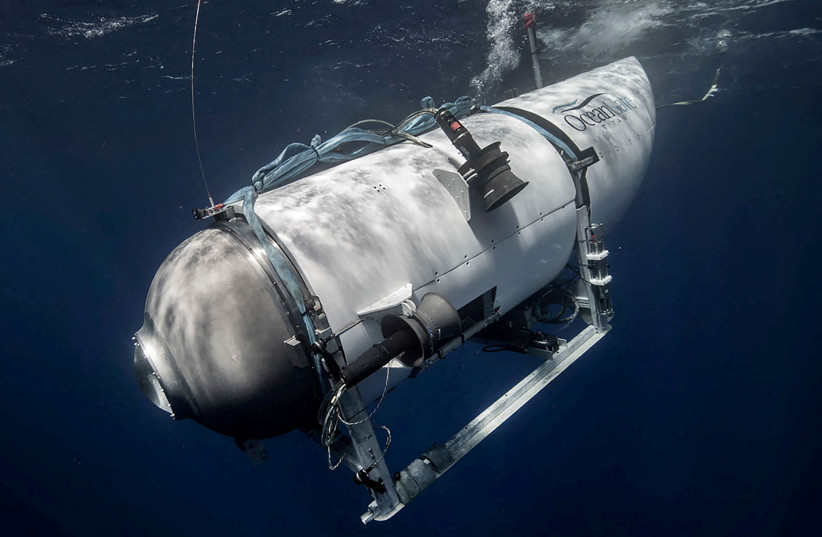Investigators delving into the Titanic submersible incident are set to analyze voice recordings and other data obtained from its mothership, as they strive to determine the cause of the tragedy and ascertain if any criminality was involved.
Reports reveal that the Transportation Safety Board of Canada dispatched officials to the Polar Prince, the lead ship of the OceanGate Titan submersible, on Saturday.
Their mission was to gather vital information from the vessel's voyage data recorder and other systems that could provide valuable insights, said Kathy Fox, Chairwoman of the TSB, in an interview with CNN.
Fox expressed the agency's objective as seeking to understand what transpired and why, as well as identifying necessary changes to minimize the likelihood of similar incidents in the future. She emphasized the potential usefulness of voice recordings in the investigation but stressed that assigning blame was not the primary focus.
Simultaneously, authorities are working to determine whether the case warrants a criminal investigation, according to Royal Canadian Mounted Police Superintendent Ken Osmond's statement to reporters on Saturday.

He clarified that an investigation of criminal, federal, or provincial law violations would proceed only if the examination of circumstances indicated such possibilities.
On June 18, OceanGate Expeditions' Titan submersible descended into the Atlantic Ocean with five passengers on board, headed for the Titanic wreckage which is approximately 12,500 feet beneath the surface. The occupants, ranging in age from 19 to 77, included two billionaires, a pioneer, the company's CEO and founder and a college student.
The submersible was sealed by 17 bolts, accessible only from the outside and carried an estimate 96 hours of oxygen reserves when it submerged. Experts estimated that the sub reached a depth of nearly 10,000 feet during its expedition, approximately one hour and 45 minutes into the dive, before all communication was lost.
Initial reports of recurring underwater noises described as "banging" and "tapping" initially sparked hope but were subsequently determined to be unrelated to the missing crew.
Recently, the US Coast Guard discovered debris on the ocean floor, approximately 1,600 feet from the Titanic's bow, indicating a "catastrophic implosion" of the submersible.
Unfortunately, it is unlikely that the bodies of the five occupants - Sulaiman Dawoof, 19; his father, Shahzada Dawood, 48; British billionaire Hamish Harding, 58; renowned Titanic explorer Paul-Henri Nargeolet, 77; and OceanGate founder and CEO Stockton Rush, 61 - will be recovered.
Warning OceanGate in 2018
Will Kohnen, the chairman of the Marine Technology Society's (MTS) committee on manned submersibles, addressed a letter dated March 27, 2018, to Rush. In the letter, Kohnen expressed what he said were widespread concerns about the Titan sub.
The problem, Kohnen said to Reuters during an interview, was not any single design flaw. The issue was that OceanGate did not go through the industry's recognized certification process for the sub's design, fabrication and testing.
"Our apprehension is that the current experimental approach adopted by OceanGate could result in negative outcomes (from minor to catastrophic) that would have serious consequences for everyone in the industry," read Kohnen's letter.
The letter came about, Kohnen said, after submarine experts attending an annual symposium expressed concerns that OceanGate would not allow certification of Titan by DNV GL, an independent quality assurance and risk management company that sets standards for the design safety of underwater vehicles.
DNV GL states on its website that it has over 40 years of experience in the field of underwater vehicles. It certifies the design and safety of such vehicles.
But it never certified Titan, according to MTS and Lochridge's lawsuit. DNV GL did not reply to requests for comment.
The letter said experts believed OceanGate should at least create a prototype testing program for the Titan that would be reviewed by DNV GL, stating that "it is our unanimous view that this validation process by a third-party is a critical component in the safeguards that protect all submersible occupants."
Stockton was sent a draft of the letter and discussed its contents in a 2018 phone call with Kohnen, in which the men "agreed to disagree" about the safety concerns raised, Kohnen said.
Reuters contributed to this article.
